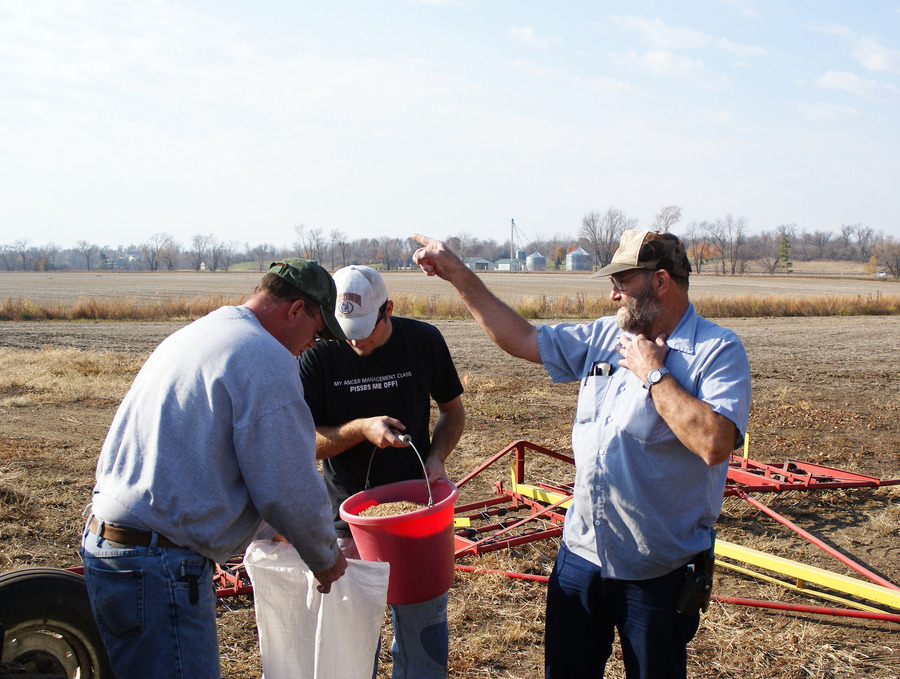In 2007, the Linnaeus Arboretum at Gustavus Adolphus College received a grant from the Carl and Verna Schmidt Foundation to help develop a new 70-acre prairie on the west side of the arboretum. The development of the new “Coneflower Prairie” took a significant step forward earlier this fall when the planting process was initiated by Feder’s Prairie Seed Co. of Blue Earth, Minn.
“Prairie is a landscape of vast proportions that once spanned horizons, encompassing 18 million acres in Minnesota prior to European settlement,” said Cindy Johnson-Groh, professor of biology and environmental studies at the College. “Less than one percent of Minnesota’s native prairie remains. Restoring a larger prairie tract in the Linnaeus Arboretum is conscientious environmental stewardship and also creates an educational, recreational, and historical resource for all who visit.”
Planting of the prairie was strategically planned for late-fall when colder temperatures prevent seeds from germinating, insuring that during the winter the seeds will make good soil contact and be ready to germinate when spring arrives.
The prairie will be managed intensively for the first five years, but with time is expected to attract a diverse community of birds, insects, and animals. The Coneflower Prairie will be the largest prairie in the region. It’s contoured landscape and public trails will allow it to serve as an educational resource for students of Gustavus and St. Peter schools.
The 125-acre Linnaeus Arboretum, located on the southwestern end of the Gustavus campus, provides an environment to educate the mind, revive the spirit, exercise the heart, and delight in Minnesota’s natural history. It is named for the Swedish botanist, Carl Linnaeus (1707-1778), who devised the binomial nomenclature system still in use today for naming all plants and animals.
The arboretum was established in 1973 with the planting of tree seedlings on what had previously been agricultural land. The three major natural ecosystems found in Minnesota are represented in the arboretum, including the northern conifer forests, prairies of the south and west, and deciduous forests from central Minnesota. Formal gardens surround the Melva Lind Interpretive Center and include more than 100 species of cultivated trees introduced from other regions.
For more information about the Coneflower Prairie or the Linnaeus Arboretum, go online to gustavus.edu/arboretum or call 507-933-6181 to speak with an arboretum staff member.


Leave a Reply